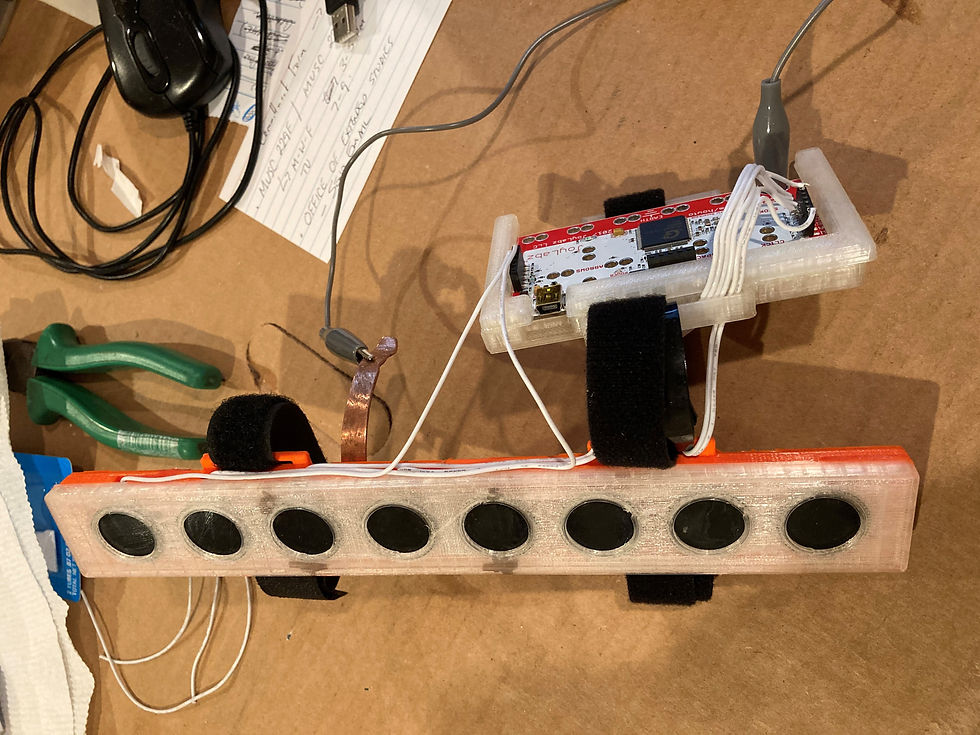James Hughes' Kindling Pile

Testing rig for code and wiring connections. Play-Doh is electricity conductive!

Used to test physical spacing of components on body before printing.


Testing rig for code and wiring connections. Play-Doh is electricity conductive!
Makey-Makey Controller
This controller project was in conjunction with my other CISD internship project, Magical Music Machinations. I was tasked with making a controller that would interface with the specific mechanics of the game. This would function via a Makey-Makey circuit board tied to a USB cable.
The Makey-Makey itself works via closing an electrical circuit, where the board outputs power, and accepts it at the button terminals. These terminals also function through the pins at the side of the board, and can be programmed to output keyboard inputs to the host computer. This would require two skin or material contact points, and a body mounted forearm rig was selected since the user would already be required to use at least one Oculus controller.
Drawn, mock-up, and physical prototyping was done, and different stages of the project can be seen in the above slides. Fusion 360 was used to generate 3D-print models for the buttons, button casing, and circuit board casing elements of the controller.
The main voltage output is tethered to a copper cuff that sits on the wrist, and enables contact regardless of position. Two Velcro straps hold the device tight to the arm. Pressing a button on the product with enough skin contact and for a long enough period to ensure proper charge let-through completes the circuit back to the Makey-Makey board, and sends a keyboard input to the computer.
Advisement and refinement of the copper cuff inclusion was provided by Frederick Hughes (grandparent), who is pictured in the slides. General 3D printing assistance and printing capabilities was provided by Nicholas Kendall. Project assignment, oversight, and guidance was provided by Virginia To.